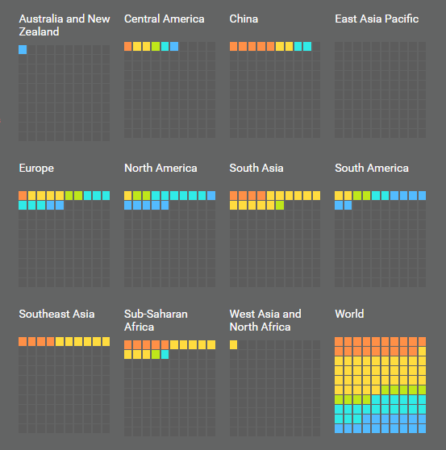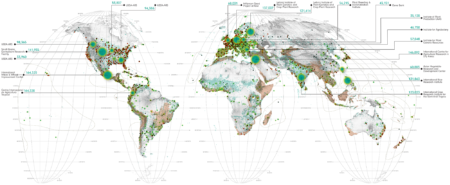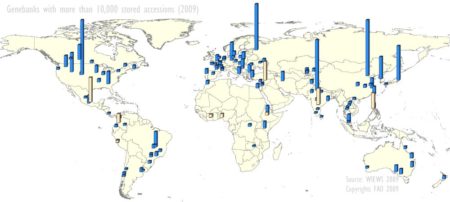Whizz-bang websites in support of data-dense papers seem to be all the rage.
Remember “Farming and the geography of nutrient production for human use: a transdisciplinary analysis,” published in the inaugural The Lancet Planetary Health a couple of weeks back? We included it in Brainfood, and linked to an article by Jess Fanzo which summarizes the main findings. This is probably the money quote:
Both small and large farms play important roles in ensuring we have enough food that is diverse and nutrient-rich. While industrialised agriculture suggests domination of food systems, smallholder farms play a substantial role in maintaining the genetic diversity of our food supply, which results in both benefits and risk reductions against nutritional deficiencies, ecosystem degradation, and climate change. Herrero and colleagues argue that if we want to ensure that the global food supply remains diverse and generates a rich array of nutrients for human health, farm landscapes must also be diverse and serve multiple purposes.
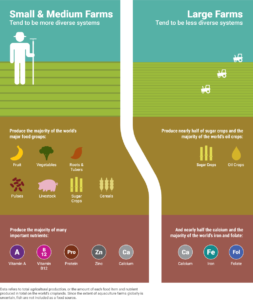 Well, there’s also a graphics-rich website now, “Small Farms: Stewards of Global Nutrition?” The infographic at the left here puts it in the proverbial nutshell (click to embiggen).
Well, there’s also a graphics-rich website now, “Small Farms: Stewards of Global Nutrition?” The infographic at the left here puts it in the proverbial nutshell (click to embiggen).
But what you really want to know is on what kinds of farms are grown those Canadian and Indian peas we talked about yesterday in connection with other fancy websites. Well, unfortunately, the data are only available for “pulses” here, but, perhaps unsurprisingly, those are grown mainly on large(ish) farms (blue) in North America, and small(ish) farms (orange) in South Asia. Each square is 1% of global production.
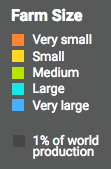 You can get similar breakdowns for different food groups (cereals, oils, etc.), and for a bunch of different nutrients: Calcium, Calories, Folate, Iron, Protein, Vitamin A, Vitamin B12, and Zinc. For all of these last you can also see global maps of nutritional yields, or “the number of people who can meet their nutritional needs from all of the crops, livestock, and fish grown in an area.” Here’s the one for Vitamin A.
You can get similar breakdowns for different food groups (cereals, oils, etc.), and for a bunch of different nutrients: Calcium, Calories, Folate, Iron, Protein, Vitamin A, Vitamin B12, and Zinc. For all of these last you can also see global maps of nutritional yields, or “the number of people who can meet their nutritional needs from all of the crops, livestock, and fish grown in an area.” Here’s the one for Vitamin A.
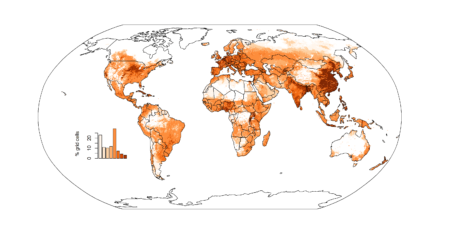
Which I’m sure will be of use in targeting the promotion of homegardening, say, or the roll-out of things like orange sweet potatoes. There is Biofortification Priority Index already, but only at a fairly coarse, country level. As far as I know, anyway.
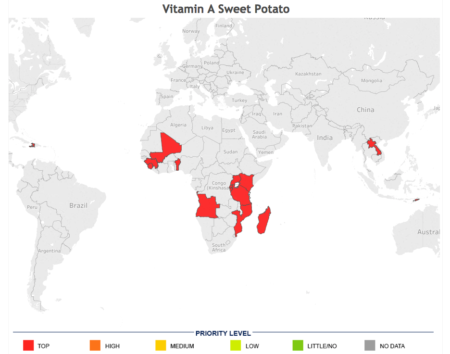
Of course, those countries could always import sweet potatoes…
